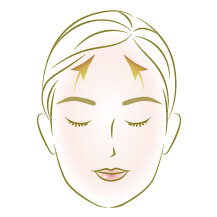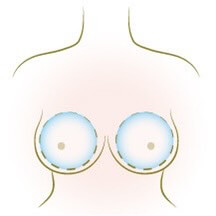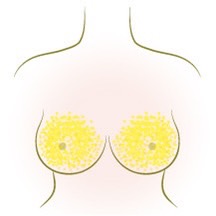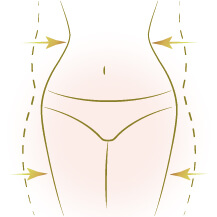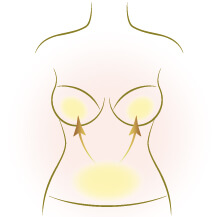Facial cosmetic surgery
Minimally Invasive Endoscopic Forehead Lift
FACIALPLASTY
FACIALPLASTY
Minimally Invasive Endoscopic Forehead Lift
- Principle
- Before and After
- Case Study
As we age, the forehead and the area around the eyes become more wrinkly and the eyebrows droop. Too little space exists between the eyes and brows. The entire upper eyelid resembles a helmet’s front cover. For these patients, a simple upper eyelid incision frequently produces unsatisfactory results; therefore, a brow lift procedure is necessary to achieve a more thorough improvement. There are a number of primary causes:
1. It is not only the eyelids that cause the aging of the face. Our foreheads and eyebrows are also sagging and sagging due to aging. Therefore, the removal of the upper eyelids alone cannot completely solve the aging problem.
2. Many medical literatures have found that: in order to improve the excess and relaxation of the upper eyelid, a large amount of the upper eyelid is removed, but the eyebrows will fall lower due to the reflex relaxation of the eyebrow levator muscle, and the upper eyelid will be squeezed downward, causing the upper eyelid to sag. It looks like no surgery has been done.
3. The thickness of the upper eyelid skin is getting thicker from the eyelashes to the eyebrows, the lower half of the upper eyelid is thinner, so the double eyelid folds formed will be more natural and delicate. Traditional double eyelid surgery removes a large amount of thin skin on the lower half in order to improve droopy eyelids, resulting in double eyelid folds formed by the thick skin on the upper half, which will look thick and unnatural.
1. It is not only the eyelids that cause the aging of the face. Our foreheads and eyebrows are also sagging and sagging due to aging. Therefore, the removal of the upper eyelids alone cannot completely solve the aging problem.
2. Many medical literatures have found that: in order to improve the excess and relaxation of the upper eyelid, a large amount of the upper eyelid is removed, but the eyebrows will fall lower due to the reflex relaxation of the eyebrow levator muscle, and the upper eyelid will be squeezed downward, causing the upper eyelid to sag. It looks like no surgery has been done.
3. The thickness of the upper eyelid skin is getting thicker from the eyelashes to the eyebrows, the lower half of the upper eyelid is thinner, so the double eyelid folds formed will be more natural and delicate. Traditional double eyelid surgery removes a large amount of thin skin on the lower half in order to improve droopy eyelids, resulting in double eyelid folds formed by the thick skin on the upper half, which will look thick and unnatural.
Forehead and eye area aging can currently be improved via minimally invasive endoscopic forehead lift surgery!
It can effectively treat the condition of sagging forehead and eyebrows by making three to five incisions behind the hairline, using an endoscope to deeply peel tissue, and lifting the aging forehead, skin tissue around the eyes, and sagging eyebrows. A high-quality endoscope can enlarge the surgeon’s field of vision, allowing for a smaller surgical incision and less pain after the procedure. Scars are difficult to see since they are concealed in the hair. enduring effects and great levels of enjoyment.
The majority of endoscopic procedures today fix the muscles and skin of the forehead using five-claw nails (endoties), which is the five-claw facelift that everyone is familiar with. A triangular fixed surface made up of five fixed claw nails is known as a “five-claw nail.” The tissue on the forehead is fixed with it. It won’t result in tissue tearing or loosing. The five-claw nail is made of an absorbent substance. After a few years, the forehead tissue has recovered and is firmly anchored in its new location. To stop bleeding, hasten the forehead tissue’s attachment to the skull, lower the risk of hematoma and seroma, and aid in wound healing, tissue glue will be applied before the incision is stitched up.
It can effectively treat the condition of sagging forehead and eyebrows by making three to five incisions behind the hairline, using an endoscope to deeply peel tissue, and lifting the aging forehead, skin tissue around the eyes, and sagging eyebrows. A high-quality endoscope can enlarge the surgeon’s field of vision, allowing for a smaller surgical incision and less pain after the procedure. Scars are difficult to see since they are concealed in the hair. enduring effects and great levels of enjoyment.
The majority of endoscopic procedures today fix the muscles and skin of the forehead using five-claw nails (endoties), which is the five-claw facelift that everyone is familiar with. A triangular fixed surface made up of five fixed claw nails is known as a “five-claw nail.” The tissue on the forehead is fixed with it. It won’t result in tissue tearing or loosing. The five-claw nail is made of an absorbent substance. After a few years, the forehead tissue has recovered and is firmly anchored in its new location. To stop bleeding, hasten the forehead tissue’s attachment to the skull, lower the risk of hematoma and seroma, and aid in wound healing, tissue glue will be applied before the incision is stitched up.
| Surgical Methods | Forehead Lift Surgery | Hairline Front Incision Forehead Facelift |
|---|---|---|
| Suitable Candidate | Sagging forehead, eyebrows, upper eyelid | Sagging forehead, eyebrows, upper eyelid |
| Surgery Time | 4 hours | 4 hours |
| Anesthesia Method | general anesthesia | general anesthesia |
| Pros | Improve the sagging of the upper eyelids, eyebrows, and forehead completely; the best and longest-lasting procedure is an eyebrow lift. | Completely enhance the forehead, brows, and sagging upper eyelids; the best and longest-lasting procedure is an eyebrow lift. Hairline decline. |
| Cons | Hairline raise | Scar in front of hairline |
| Recovery Period | Acute swelling and bruising subside in about two weeks | Acute swelling and bruising subside in about two weeks |
| Close to Natural Look | More than 2-3 months | More than 2-3 months |
The expertise of Dr. Chen in patient care is “surgical comparison.” All of the aforementioned techniques call for open dialogue between the patient and the doctor to choose the best surgical approach.

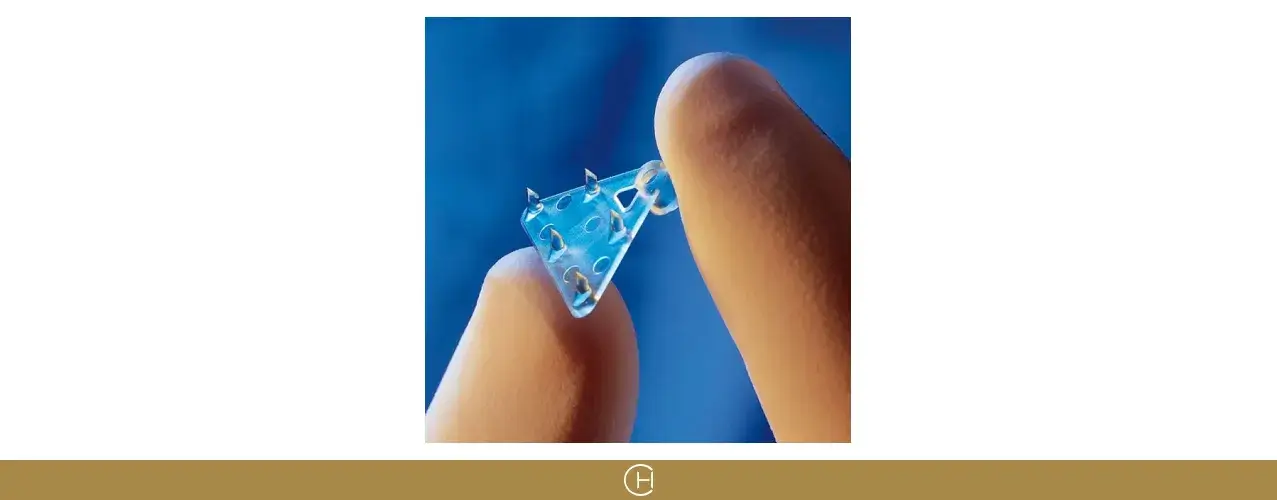
Anesthesia and Preoperative Planning
1. If you have any drug allergies, please inform your doctor before surgery
2. It is necessary to stop anticoagulant drugs for one week before surgery to avoid intraoperative and postoperative bleeding
3. It is also recommended to avoid smoking for at least two weeks before and after surgery
4. If you have systemic diseases such as high blood pressure, heart disease, diabetes, abnormal thyroid function, etc., it is recommended that specialists control and stabilize before undergoing surgery
5. If you or your family have swollen feet or hypertrophic scars, please inform your doctor before surgery
6. Endoscopic forehead lift surgery is recommended to be performed under general anesthesia.
2. It is necessary to stop anticoagulant drugs for one week before surgery to avoid intraoperative and postoperative bleeding
3. It is also recommended to avoid smoking for at least two weeks before and after surgery
4. If you have systemic diseases such as high blood pressure, heart disease, diabetes, abnormal thyroid function, etc., it is recommended that specialists control and stabilize before undergoing surgery
5. If you or your family have swollen feet or hypertrophic scars, please inform your doctor before surgery
6. Endoscopic forehead lift surgery is recommended to be performed under general anesthesia.
Recovery process and post-operative care
1. It is recommended to apply ice for 5-7 days, 10 minutes per hour, to reduce pain and bruising
2. Prophylactic antibiotics, anti-inflammatory, analgesic, detumescence, hemostasis, and other oral medicines will be given for three days after surgery;
3. The wound care team will prescribe eye ointment to change the dressing. Change the dressing once in the morning and evening. Use normal saline or boiled water to clean the wound, clean the scabs, secretions and the old ointment, and then apply a new one. ointment
4. The sutures will be removed about 10-14 days after the operation
5. After the stitches are removed, it is recommended to warm the skin (the temperature of the face wash water in the morning in winter), 10 minutes per hour, can accelerate the relief of bruises
6. The degree of postoperative bruising and swelling varies from person to person. Generally, it is most obvious 3 or 4 days after the operation, and most patients can be relieved about two weeks after the operation.
7. After the operation, you can shampoo your hair, face, take a bath as normal, dry it immediately after washing, and then apply the ointment. But avoid swimming, splashing in the water by the seaside stream and soaking in hot springs
8. Avoid strenuous activities after surgery, such as heavy training, running, mountaineering, rock climbing…etc. It can increase blood pressure and cause bleeding, or open wounds.
9. The diet is generally normal, but avoid tobacco, alcohol and spicy food (too spicy and salty)
2. Prophylactic antibiotics, anti-inflammatory, analgesic, detumescence, hemostasis, and other oral medicines will be given for three days after surgery;
3. The wound care team will prescribe eye ointment to change the dressing. Change the dressing once in the morning and evening. Use normal saline or boiled water to clean the wound, clean the scabs, secretions and the old ointment, and then apply a new one. ointment
4. The sutures will be removed about 10-14 days after the operation
5. After the stitches are removed, it is recommended to warm the skin (the temperature of the face wash water in the morning in winter), 10 minutes per hour, can accelerate the relief of bruises
6. The degree of postoperative bruising and swelling varies from person to person. Generally, it is most obvious 3 or 4 days after the operation, and most patients can be relieved about two weeks after the operation.
7. After the operation, you can shampoo your hair, face, take a bath as normal, dry it immediately after washing, and then apply the ointment. But avoid swimming, splashing in the water by the seaside stream and soaking in hot springs
8. Avoid strenuous activities after surgery, such as heavy training, running, mountaineering, rock climbing…etc. It can increase blood pressure and cause bleeding, or open wounds.
9. The diet is generally normal, but avoid tobacco, alcohol and spicy food (too spicy and salty)
Follow-ups and complications
1. A modest receding of the hairline. Consider an endoscopic forehead lift with an incision at the front of the hairline if your forehead is too high.
2. There is a danger of infection, hemorrhage, inadequate wound healing, etc. with any operation.
3. Although all surgeries leave scars, the plastic surgeon will meticulously stitch and use extremely thin sutures to tuck the scars into the creases of the skin and the borders of the hair, making them less noticeable and more difficult to locate. Even so, the scar may still be momentarily red, elevated (1-2 months after the operation), itchy, and numb before it stabilizes, but it will typically gradually decrease after two to six months. obvious.
2. There is a danger of infection, hemorrhage, inadequate wound healing, etc. with any operation.
3. Although all surgeries leave scars, the plastic surgeon will meticulously stitch and use extremely thin sutures to tuck the scars into the creases of the skin and the borders of the hair, making them less noticeable and more difficult to locate. Even so, the scar may still be momentarily red, elevated (1-2 months after the operation), itchy, and numb before it stabilizes, but it will typically gradually decrease after two to six months. obvious.







